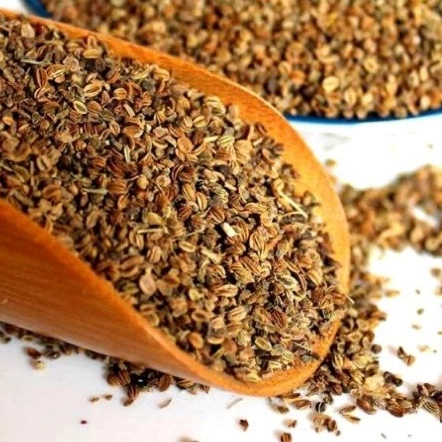
Cnidium Fruit (Cnidium monnieri), often referred to as Osthole, is a cornerstone herb in Traditional East Asian Medicine (TEAM). It is increasingly valued in modern pet wellness for its exceptional ability to soothe chronic skin irritation, manage discomfort, and support the maintenance of a healthy skin barrier.
The power of Cnidium lies in its primary bioactive compound, osthole, a coumarin derivative extensively studied for its anti-pruritic (anti-itch) and anti-inflammatory mechanisms. This makes the herb an invaluable, natural defense for pets struggling with persistent skin sensitivities.
At Phytopaw, we understand that a pet's skin is their first line of defense. We strategically incorporate Cnidium Fruit extract into our targeted skin health supplements to ensure your companions—especially those prone to seasonal or environmental allergies—receive natural, deep-level support for a calm, resilient skin barrier.

Cnidium Fruit, or She Chuang Zi, is the dried fruit of the Cnidium monnieri plant, an annual herb native to China, Korea, and Southeast Asia. For thousands of years, it has been primarily used topically to treat various dermatological issues and externally on the skin.
Its modern relevance is closely tied to osthole, which research confirms acts on cellular pathways to mitigate the body's reaction to irritants.
For pets, skin health challenges are incredibly common, often presenting as excessive scratching, redness, and inflammation. Cnidium’s natural compounds work synergistically to interrupt the itch-scratch cycle and bolster the skin's overall structural integrity, leading to noticeable relief and improved coat quality.
Cnidium Fruit offers targeted support, establishing it as a key ingredient for skin comfort and protection. Its key benefits for your pet include:

1. Potent Anti-Pruritic (Anti-Itch) Action
The most notable benefit of Cnidium is its direct effect on reducing the urge to scratch. Studies have demonstrated that the active compounds, particularly osthole, exhibit significant anti-pruritic effects by targeting nerve endings and modulating the body’s sensory response to irritation. In in-vivo models, Cnidium extracts have been shown to dose-dependently suppress scratching behavior induced by histamine, offering immediate comfort to pets.
2. Calming Skin Inflammation
Beyond just stopping the itch, Cnidium helps calm the underlying cause. Research indicates that osthole possesses strong anti-inflammatory properties by inhibiting the release of certain pro-inflammatory mediators and blocking key signaling pathways (like NF-B activation). This action helps to reduce redness, swelling, and chronic irritation associated with dermatitis and allergies.
3. Supporting Skin Barrier Function
Healthy skin requires a strong barrier. Cnidium not only soothes but also contributes to the maintenance of the skin's lipid barrier. By promoting a more stable and less reactive dermal layer, the herb helps pets better resist external moisture loss and irritant penetration, reinforcing their natural defenses and increasing overall skin resilience.

While Cnidium Fruit excels at targeted skin relief, its efficacy is maximized when combined with other skin-supporting botanicals in a comprehensive formula.
The Phytopaw SkinGuard Tincture harnesses the synergistic effect of multiple ingredients to provide internal and external skin support.
Cnidium Fruit leads the way in calming the itch, but its action is complemented by:
· Burdock Root: Helps purify the blood and supports long-term skin health.
· Dandelion Leaf: Offers rich vitamins and minerals to nourish skin tissue.
· Milk Thistle: Supports liver function, which is critical for detoxifying the body and reducing skin reactivity.
· Nettle Leaf: Provides natural antihistamine-like properties to ease seasonal discomfort.
This multi-ingredient approach ensures your pet receives protection that is both focused on immediate comfort (via Cnidium's anti-itch properties) and comprehensive for long-term skin immunity.
Usage Guidance
Cnidium Fruit extract is a primary component in Phytopaw's topical and ingestible skin health solutions. For best results, use the product consistently as directed, focusing on supporting the pet's natural resilience during high-risk seasons or periods of flare-up.
Who Should Exercise Caution?

As with any potent herbal medicine, consultation with a trusted veterinarian is necessary before starting new supplements, especially if your pet is pregnant, has known liver issues, or is taking concurrent medications.
Takeaway: Choosing Phytopaw means addressing pet skin health at its core. Cnidium Fruit offers the essential East Asian secret to calming the itch-scratch cycle and reinforcing the skin barrier, ensuring your pet enjoys lasting comfort and vitality.
Reference
Matsuda, H., Tomohiro, N., Ido, Y., & Kubo, M. (2002). Anti-allergic effects of Cnidii Monnieri Fructus (Dried Fruits of Cnidium monnieri) and its major component, Osthol. Biological and Pharmaceutical Bulletin, 25(6), 809–812. doi:10.1248/bpb.25.809
Zou, Y., Lu, Y., & Chen, J. (2015). Phytochemistry, ethnopharmacology, pharmacokinetics and toxicology of Cnidium monnieri (L.) Cusson. Frontiers in Pharmacology, 6, 242. doi:10.3389/fphar.2015.00242
Zhang, M., Sun, W. R., Cao, Y. F., Cao, Y., Wu, X., Jin, J., ... & Chen, X. P. (2016). Osthole inhibits histamine-dependent itch via modulating TRPV1 activity. Scientific Reports, 6, 25657. doi:10.1038/srep25657
Lee, M. K., Bok, S. H., Park, C. S., Lee, M. K., Cha, B. Y., Park, Y. B., & Choi, M. S. (2007). Anti-inflammatory effect of osthole from Cnidium monnieri on lipopolysaccharide-induced nitric oxide and pro-inflammatory cytokine production. Archives of Pharmacal Research, 30(7), 841–847. doi:10.1007/BF02978832